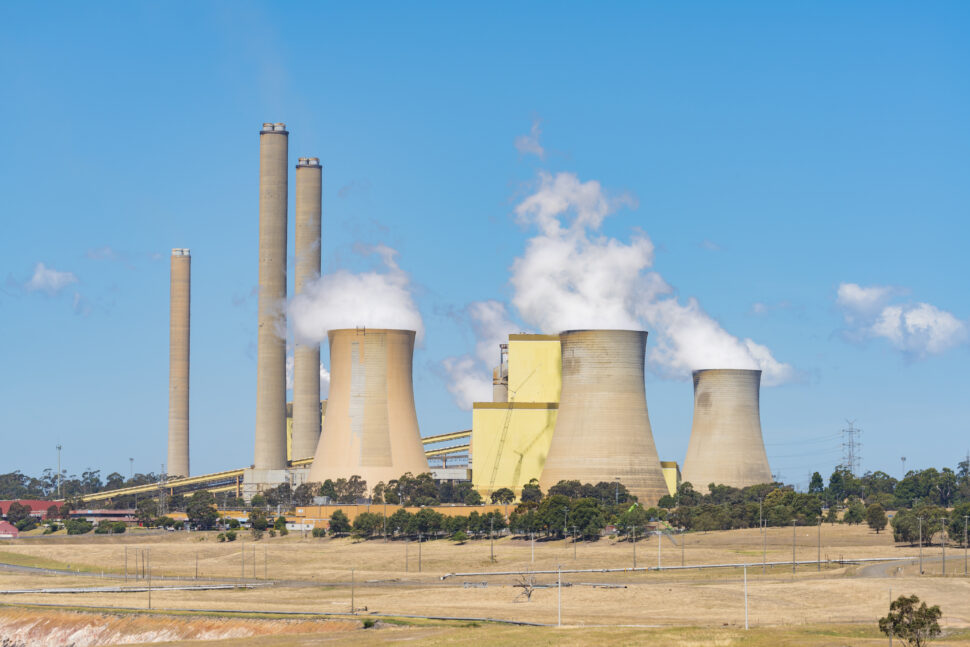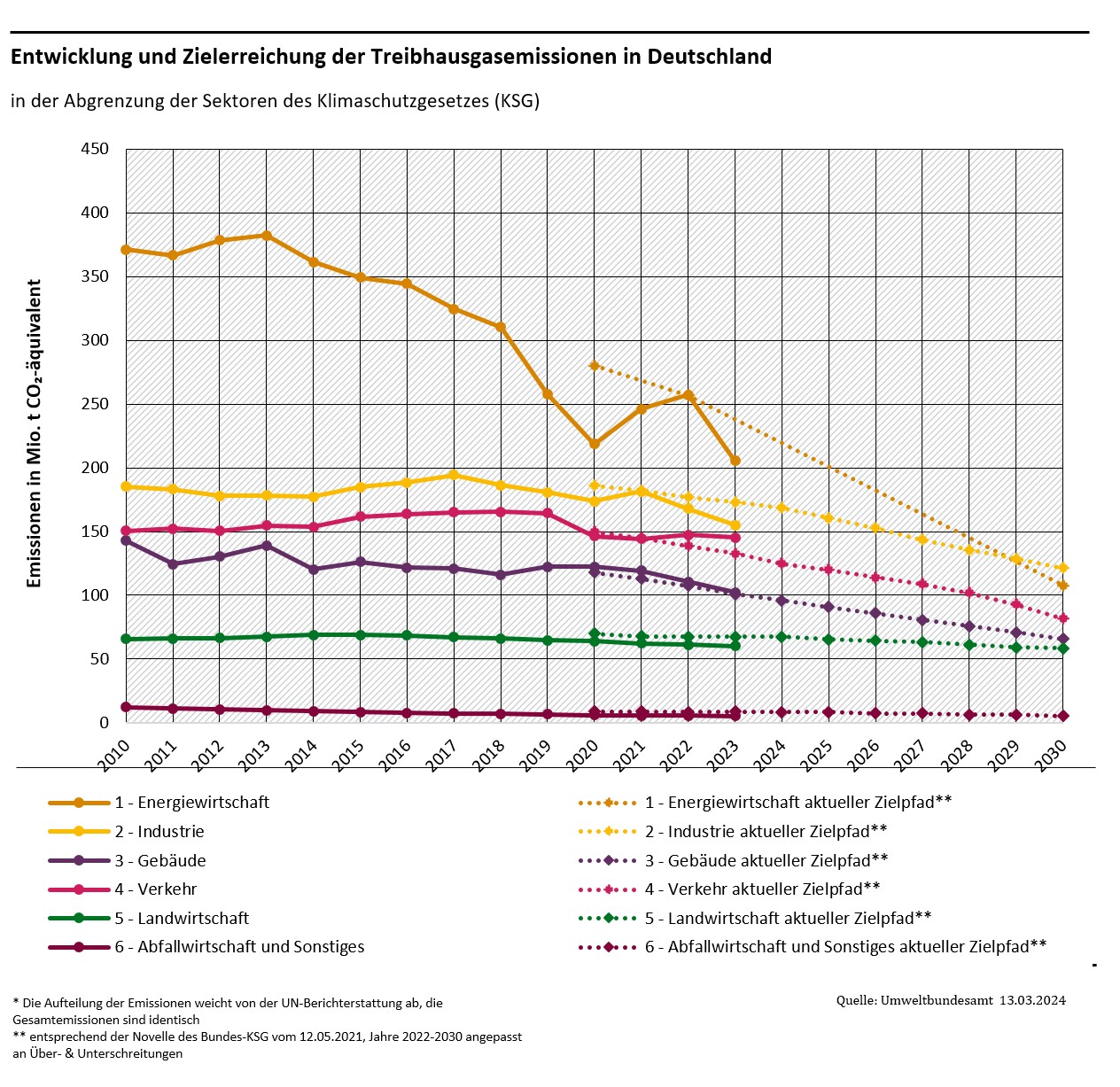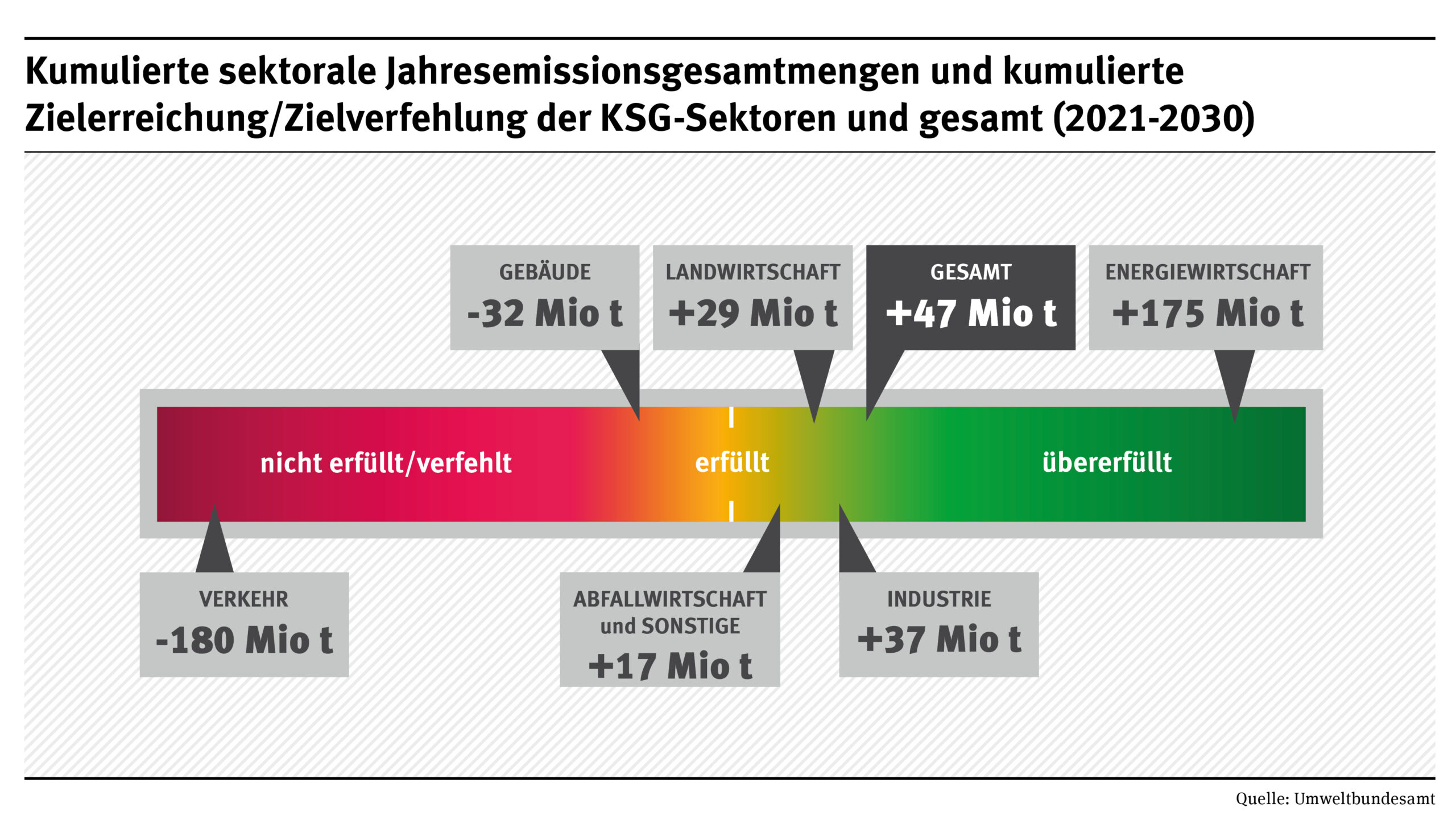Climate protection
March 16, 2024
By Stephan W. Eder
Reading time: approx. 1 minute
Germany emitted 10.1% fewer greenhouse gases last year than in 2022. This is shown by new figures from the Federal Environment Agency (UBA). This only shows a limited success of climate policy.

Photo: PantherMedia / Yuen Man Cheung
At first glance, it is a real success report that the Federal Environment Agency published on Friday, March 15, 2024. “Climate emissions will fall by 10.1% in 2023 – largest decline since 1990,” it was headlined. 673 million tons of CO2equivalents were released, 76 million t less than in 2022, that is -10.1%. This is a record report. No wonder that Robert Habeck from the Federal Ministry of Economics and Climate Protection contacted us shortly afterwards: “If we stay on course, we will achieve our 2030 climate goals,” he is quoted as saying. By then, according to the Climate Protection Act (KSG), German greenhouse gas emissions should be reduced by 65% compared to 1990 levels.
Also read: EU project: CO2 emissions in automobile production should be reduced
The UBA also provides a so-called projection which, after last year’s drop in greenhouse gas emissions, shows that a reduction of almost 64% could be expected by 2030. According to the ministry, the goal of the KSG becomes tangible. And there is a good trend for climate protection: the UBA expected a reduction of 63% last year; the year before that, the environmental watchdogs from Dessau estimated only a meager 49%. If we look at this data, climate protection in Germany tends to get better and better.
Which greenhouse gas emissions in Germany fell in 2023 and why?

Development and target achievement of greenhouse gas emissions in Germany. Graphic: Federal Environment Agency
UBA President Dirk Messner sees the “very successful expansion of renewable energies” as the main cause of the reduced emissions. In addition, there is a decline in fossil energy production and a reduced demand for energy from businesses and consumers – in other words: economic downturn and favorable weather. Regarding the results in the individual sectors:
- Energy industry: Emissions fell by around 51.8 million t (-20.1%) to around 205 million t in 2023 compared to 2022, “which is due to a lower use of fossil fuels to generate electricity and heat,” according to the statement UBA in its announcement. A decline in coal was primarily responsible, which means less electricity generation based on this fossil fuel. The UBA also attributes this decline to the consistent expansion of renewable energies. And less natural gas: That’s the mild weather – gas heating is the leader in heating technology, not yet heat pumps. And yes: both industry and commerce as well as private households continue to save when it comes to heating.
- Industry: There was a decrease of almost 13 million t of CO2equivalents (-7.7%) to around 155 million t. Here too: less use of fossil fuels, especially natural gas and hard coal. The UBA identifies “the negative economic development and increased manufacturing costs, which led to declines in production” as “important drivers of this trend”. But that also means: Without an economic downturn, emissions would probably have been higher, and energy prices are sometimes significantly lower this year, so they don’t act as a brake on consumption.
- Buildings: 8.3 million t (-7.5%) less than 2022, emissions were 102 million t in 2023. Here too, energy savings due to the mild weather and higher energy prices were crucial. The UBA also cites the addition of heat pumps as reducing emissions.
- Transport: Around 146 million t would be emitted here in 2023, a meager 1.8 million t (-1.2%) less than in 2022. “The main driver of the small decline in emissions is not effective climate protection measures, but rather the decreasing mileage in road freight transport.” , the UBA has determined. The economic downturn is also making itself felt there. If the economy picks up again, trucks will also be able to cover kilometers again.
UBA expects to achieve Germany’s climate protection goals for 2030
Looking ahead to 2030, Dirk Messner, President of the Federal Environment Agency, was confident that the national climate targets can be met. “We have already made a lot of progress in climate protection. At the beginning of the legislative period, we expected 1,100 million tons to be too high for 2030. Now we see in our projections for 2030 that this gap will be closed if we continue to work so ambitiously on climate protection.”
Interesting for you: Climate protection agreements: Federal government auctions billions to zealous climate protectors

Cumulative target achievement or failure to protect climate protection in the various contributing sectors in Germany in 2023. Graphic: Federal Environment Agency
The basis for Messner’s optimism are: “Greenhouse gas projections 2024”, that his house created: what emissions can be expected by 2030? There are also target values for this in the KSG. And now the UBA expects that 47 million tonnes of CO will be released by 20302-Equivalents consumed less than required by law. The positive outlook is also reflected in the individual sectors:
- Energy: exceeds its emissions target by 175 million tonnes, which is largely based on the successful expansion of renewable energies.
- Industry: emits 37 million tons less than the KSG requires, “in the coming years, the recovery of industry will go hand in hand with its decarbonization,” writes the UBA.
- Buildings: here the measures, such as the scolded heating law, are effective, but the emissions target is missed at 32 million tons more than planned.
- Transport: completely destroys the KSG sector specifications with 180 million tonnes more than planned.
- The agriculture and waste management and other sectors exceeded their targets by 29 million t and 17 million t, respectively.
Transport continues to be a problem child when it comes to climate protection
“The transport sector in particular remains a major problem child,” says UBa President Messner. “More urgently needs to happen here – for example by expanding electromobility and dismantling company car privileges and other climate-damaging subsidies.” So the funds are there, they have to be used.
Record climate protection could not be sustainable
Environmental groups warn against misplaced optimism. This is not a “carte blanche for the federal government when it comes to climate protection,” emphasized the German Association for the Environment and Nature Conservation. And Viviane Raddatz from WWF Germany warned: “Political and economic crises are reflected here, instead of the will for transformation and structural climate protection measures in all sectors.”
Some scientists are also skeptical about the sustainability of the reductions. “However, a closer look at the reasons for this sharp decline in emissions makes it clear that only a small part of the decline can really be attributed to long-term climate protection measures. Rather, special developments, some of which can be reversed in the next few years, are responsible for a large part of the decline in emissions,” explains Manfred Rumpf, President of the Wuppertal Institute.
Niklas Höhne, director and managing director of the New Climate Institute in Cologne, and professor of mitigation of greenhouse gas emissions at Wageningen University in the Netherlands, interprets the UBA data in terms of party politics: “The Green-led Ministry of Economic Affairs can take advantage of the boom in the solar industry and credit a significant over-fulfillment of the climate protection target. The SPD-led Ministry of Construction is mediocre and the target for the building sector is easily missed. And the FDP-led Ministry of Transport is lagging behind, lacks any ambition and is falling far short of its goal.”
However: The data presented by the UBA on March 15, 2024 is preliminary. The Expert Council for Climate Issues is now checking it: “The UBA will publish the complete, official and detailed inventory data on GHG emissions in Germany for 2023 in January 2025 and transmit it to the European Commission. checked. Final figures for 2023 will only be available next year,” said the office.